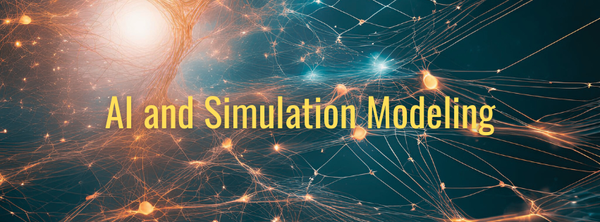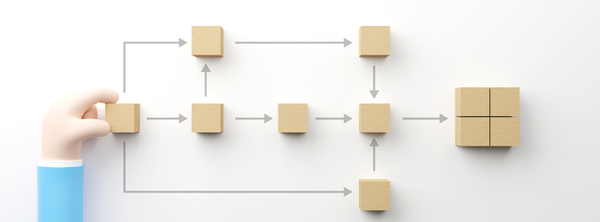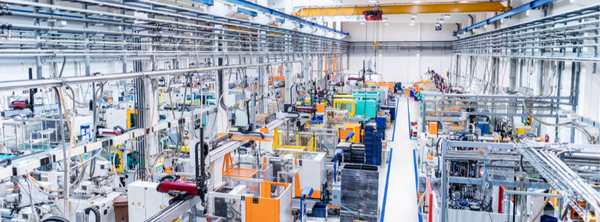Understanding and Analyzing Muda, Mura, and Muri with FlexSim Simulation
In lean methodology, the concepts of Muda, Mura, and Muri are crucial for understanding inefficiencies and driving continuous improvement.

In lean methodology, the concepts of Muda, Mura, and Muri are crucial for understanding inefficiencies and driving continuous improvement. These Japanese terms, often called the "Three M’s," represent different inefficiencies that can affect any process. In this article, I will explore these concepts and discuss how simulation with FlexSim can be a powerful tool for analyzing and mitigating these inefficiencies. Additionally, I will highlight the benefits of using simulation for such analyses.
Muda (Waste)
Muda, in lean terminology, refers to any activity that does not add value to the customer. Waste can manifest in various forms, including:
- Overproduction: Producing more than what is needed.
- Waiting: Idle time when resources are not being utilized.
- Transportation: Unnecessary movement of products or materials.
- Over-processing: Performing more work than required.
- Inventory: Excess products or materials that are not immediately needed.
- Motion: Unnecessary movements by people or machines.
- Defects: Products that do not meet quality standards.
Identifying and eliminating Muda is essential for improving process efficiency and reducing costs.
Mura (Unevenness)
Mura refers to the irregularities and inconsistencies in a process. This unevenness can lead to:
- Fluctuations in Production: Variations in production levels can cause bottlenecks and downtime.
- Unbalanced Workloads: Some resources may be overworked while others are underutilized.
- Inconsistent Quality: Process variability can lead to inconsistent product quality.
Organizations can achieve a more balanced and predictable workflow by addressing Mura, improving overall efficiency.
Muri (Overburden)
Muri denotes the overburdening of resources beyond their capacity. This can lead to:
- Resource Fatigue: Overworking employees or machines can result in fatigue, errors, and breakdowns.
- Safety Hazards: Overburdened processes can create unsafe working conditions.
- Decreased Reliability: Consistently operating beyond capacity can reduce the reliability and lifespan of equipment.
Reducing Muri helps ensure that resources are used within their optimal capacity, promoting safety and longevity.
Using FlexSim to Analyze Muda, Mura, and Muri
FlexSim is a powerful simulation tool that can be used to model, analyze, and optimize processes. Here’s how it can be applied to each of the Three M’s:
Analyzing Muda (Waste)
- Process Mapping and Modeling: FlexSim allows you to create a detailed model of your current process, mapping out each step and resource involved.
- Identify Waste Points: By simulating the process, you can identify areas where resources are underutilized, excess inventory is accumulated, or unnecessary transportation occurs.
- Scenario Testing: Test different scenarios to see the impact of eliminating waste. For example, simulate the removal of non-value-added activities or streamline workflows.
- Measure Improvements: Use FlexSim’s analytical tools to measure key performance indicators (KPIs) like cycle time, throughput, and resource utilization before and after implementing changes to reduce waste.
Analyzing Mura (Unevenness)
- Visualizing Demand Fluctuations: Simulate the production process with varying customer demands to visualize how these fluctuations affect the process.
- Balancing Workloads: Identify points where workloads are unevenly distributed across resources or time periods. FlexSim can help visualize these imbalances through graphical outputs.
- Level Loading: Test different strategies for leveling production loads (Heijunka) to maintain a consistent workflow. Simulate the effects of distributing work more evenly across available resources.
- Process Optimization: Use FlexSim to find the optimal scheduling and resource allocation that minimizes unevenness in the production process.
Analyzing Muri (Overburden)
- Capacity Analysis: Simulate the process to identify instances where machines, workers, or other resources are overburdened, operating beyond their rated capacity.
- Stress Testing: Perform stress tests by simulating peak loads and overburden scenarios to see how the process behaves under extreme conditions.
- Resource Reallocation: Experiment with reallocating resources to prevent overburden. For example, more workers or machines can be added at critical points in the process and simulate the effects.
- Safety and Reliability: Use simulation to evaluate the impact of overburden on the safety and reliability of the process. Identify potential failure points and develop strategies to mitigate risks.

Benefits of Using Simulation for Analyzing Muda, Mura, and Muri
Comprehensive Visualization
Simulation provides a visual representation of the entire process, making it easier to identify inefficiencies. By seeing how different elements interact, you can better understand where Muda, Mura, and Muri occur and how they impact overall performance.
Risk-Free Testing
One significant advantage of using FlexSim is the ability to test changes in a virtual environment. This means you can experiment with different strategies for reducing waste, balancing workloads, and preventing overburden without disrupting actual operations. It allows for safe experimentation and validation of improvements before implementation.
Data-Driven Decision Making
FlexSim provides detailed data and analytics, enabling informed decision-making. By measuring KPIs such as cycle time, throughput, and resource utilization, you can quantify the impact of proposed changes and choose the most effective solutions.
Continuous Improvement
Simulation supports a cycle of continuous improvement (Kaizen). By regularly updating the simulation model with new data and re-evaluating the process, you can continuously identify and address new inefficiencies as they arise. This ongoing process helps maintain optimal performance and adaptability to changing conditions.
Enhanced Communication
Visual simulations can serve as powerful tools for communication and training. They help convey complex concepts and proposed changes to stakeholders and employees, facilitating better understanding and buy-in. This can lead to smoother implementation of improvements and a more collaborative approach to problem-solving.
Resource Optimization
Organizations can optimize resource utilization by using simulation to identify and address Muda, Mura, and Muri. This leads to cost savings, improved productivity, and enhanced overall efficiency. Resources are allocated more effectively, reducing waste and preventing overburden.
Safety and Reliability
Simulating different scenarios helps identify potential safety hazards and reliability issues. Addressing these concerns in the simulation, you can develop strategies to mitigate risks, ensuring a safer and more reliable operation. This proactive approach enhances both employee safety and process stability.
Strategic Planning
Simulation can aid in strategic planning by providing insights into the long-term impacts of changes. It helps forecast the outcomes of different improvement strategies, enabling better planning for future growth and development. This strategic foresight is crucial for maintaining competitiveness and achieving long-term goals.

Conclusion
Understanding and addressing Muda, Mura, and Muri are essential for achieving lean efficiency and continuous improvement. FlexSim offers a robust platform for simulating, analyzing, and optimizing processes, making it an invaluable tool for identifying and mitigating these inefficiencies. By leveraging simulation, organizations can achieve comprehensive visualization, risk-free testing, data-driven decision-making, continuous improvement, enhanced communication, resource optimization, safety and reliability, and strategic planning.
Incorporating simulation into your lean methodology toolkit helps understand your processes' current state and paves the way for a more efficient, productive, and sustainable future. Whether you are looking to reduce waste, balance workloads, or prevent overburden, FlexSim provides the tools and insights needed to achieve your improvement goals.
Embrace the power of simulation to transform your operations and drive continuous improvement, ensuring your organization remains agile, competitive, and efficient in an ever-evolving landscape.
References and Resources:
[1] Lean Enterprise Institute, An Introduction to Muda, Mura, and Muri, (Oct. 01, 2020). Online Video. Available: https://www.youtube.com/watch?v=d5-VkIh5SKI
[2] Lean Enterprise Institute, C. Marchwinski, J. Shook, and Lean Enterprise Institute, Eds., Lean lexicon: a graphical glossary for lean thinkers. Brookline, Mass: Lean Enterprise Institute, 2003.
[3] Narusawa T. and Shook J., Kaizen express: fundamentals for your lean journey. Cambridge, Mass: Lean Enterprise Institute, 2009.
[4] J. Bicheno and M. Holweg, The lean toolbox: a handbook for lean transformation, Fifth edition. Buckingham, England: Production and Inventory Control, Systems and Industrial Engineering (PICSIE) Books, 2016.




